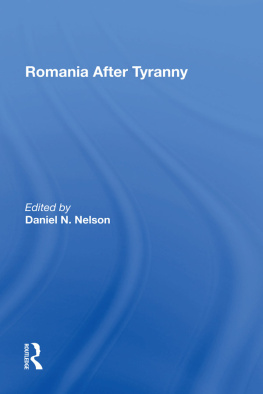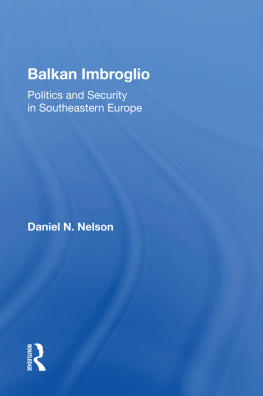A History of U.S. Military Forces in Germany
About the Book and Author
Since the diplomatic relationship between the U.S. and the FRG is the heartbeat of the Atlantic Alliance, West Germany is the most strategically vital European member of the alliance. U.S. forces have been stationed in the country since the end of World War II, constituting the largest U.S. overseas contingent Discussing why the U.S. will remain in the FRG for the foreseeable future, Dr. Nelson examines the U.S. military presence in broad historical perspective. He shows how that presence has affected the development of the political and diplomatic relationship between the two countries and has contributed to a dense network of military/civilian relationships, including kinships through marriage and individual friendships. Exploring the military side of this close and abiding partnership, the book analyzes U.S. successes and failures, pointing to changes necessary for maintaining the cohesiveness and viability of the U.S. presence on an allys soil.
Daniel J. Nelson is associate professor of political science at Auburn University.
To Myles Nelson and to the memory of David Nelson
First published 1987 by Westview Press
Published 2018 by Routledge
52 Vanderbilt Avenue, New York, NY 10017
2 Park Square, Milton Park, Abingdon, Oxon OX14 4RN
Routledge is an imprint of the Taylor & Francis Group, an informa business
Copyright 1987 by Taylor & Francis
All rights reserved. No part of this book may be reprinted or reproduced or utilised in any form or by any electronic, mechanical, or other means, now known or hereafter invented, including photocopying and recording, or in any information storage or retrieval system, without permission in writing from the publishers.
Notice:
Product or corporate names may be trademarks or registered trademarks, and are used only for identification and explanation without intent to infringe.
Library of Congress Cataloging-in-Publication Data
A history of U.S. military forces in Germany.
(Westview special studies in military affairs)
Bibliography: p.
Includes index.
1. United StatesArmed ForcesGermany (West)
2. United StatesMilitary relationsGermany (West)
3. Germany (West)Military relationsUnited States.
I. Title. II. Title: History of U.S. military forces in
Germany. III. Series.
UA26.G3N45 1987 355.033043 86-22471
ISBN 0-8133-7333-6
ISBN 13: 978-0-367-01365-3 (hbk)
Military history was one of the casualties of the Vietnam War. Long out of fashion among social scientists and historians because of the unhappy outcome of that conflagration, military history has been rediscovered again in recent years. Indeed it has achieved a new kind of vitality through the addition of sociological: and socio-political dimensions to the more usual concern with strategy and tactics. This book is military history of a peculiar sort, since it concerns itself as much with politics and diplomacy as with armies, equipment, and strategies. It attempts to focus upon the military dimension of a diplomatic relationship which is central to U.S.-European relations. For the vitality of the NATO alliance there is no single bilateral relationship which is more critical than the relationship between the Federal Republic of Germany and the United States. And central to the relationship between the U.S. and West Germany is the fact of the massive American military presence physically on West German soil. As a student of West German-American relations for many years, I find it intriguing that no one has attempted up to this time to construct a history of the American military presence in Germany, for it is that very presence which imparts many of the basic definitional characteristics to the relationship. This book is an attempt to fill that gap.
The earlier portions of this study (Though many kinds of sources were at times helpful, I have tended to rely heavily upon accounts given in the German press in these chapters. Though there may be lacunae which are plainly evident to the trained historical eye, I shall justify my heavy use of the German press primarily in terms of the focus I have attempted to develop for this study. One of the primary goals has been to portray the American military presence in West Germany as it is experienced by the German civilian population. We know much more about American preoccupations, goals, and views, either explicitly or implicitly, in the first place. What we too often tend to neglect is the German dimension - how the massive American presence looks and feels from the German point of view. If Stoessinger is right in his emphasis upon empathy as a key to historical understanding, and this author believes that he is, then it behooves us to make a special effort to put ourselves in the shoes of the Germans and to experience the American presence, and its implications for policy in reference to German-American relations, as they do.
Two items related to the authors responsibility require specific mention. All translations from German sources into English, including translations of government documents and articles in the press, are the authors own. The author accepts full responsibility for the accuracy of the translation as well as the sense or contextual meaning of the original source. Footnotes which cite articles from the German press give the name of the newspaper and the date of publication, but not the page of the material quoted. This is because the filing system for newspaper clippings at the Federal Press and Information Office in Bonn is organized topically according to date and name of newspaper, but without exact page numbers.
I have been aided immensely in this endeavor by many research institutions and individuals in both West Germany and the United States. To name even some of them is to risk omitting others who may have been equally helpful. Unfortunately, it is possible to list here only the individuals and organizations without whose help the manuscript could not have been completed.
First and foremost I am indebted to the Hoover Institution on War, Revolution and Peace, Stanford University, which supported the project with funding for a full year of unencumbered research and writing. Much of the manuscript was written during the period of my appointment as Edward Teller National Fellow at the Hoover Institution. The Institutions excellent facilities and genial ambience provided an atmosphere most conducive to the scholars craft. I extend many thanks to my colleagues and Senior Fellows at Hoover, Lewis Gann, Peter Duignan, and Dennis Bark for advice, aid, and encouragement during many months of labor. I am also indebted to Auburn University, which provided a faculty research grant-in-aid for several months of field research in Germany. An enormous debt of gratitude is due to my talented research assistant at Stanford, Conrad Rubin, for his help throughout an entire academic year. Mr. Rubin provided excellent background material for the construction of the historical accounts in the first three chapters. My research assistant at Auburn University, Michael Rasmussen, also helped to advance the project with incredible skill and talent. Mr. Rasmussen assembled the bibliography in final form, constructed the tables, and did much useful editorial work. William C. Flick, computer systems support specialist at Auburn University, contributed his special genius to the management and use of complex data sets on a mainframe computer.










